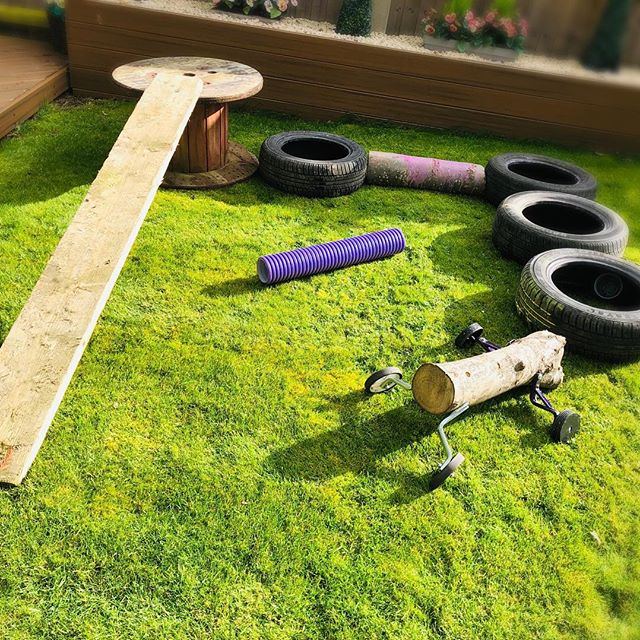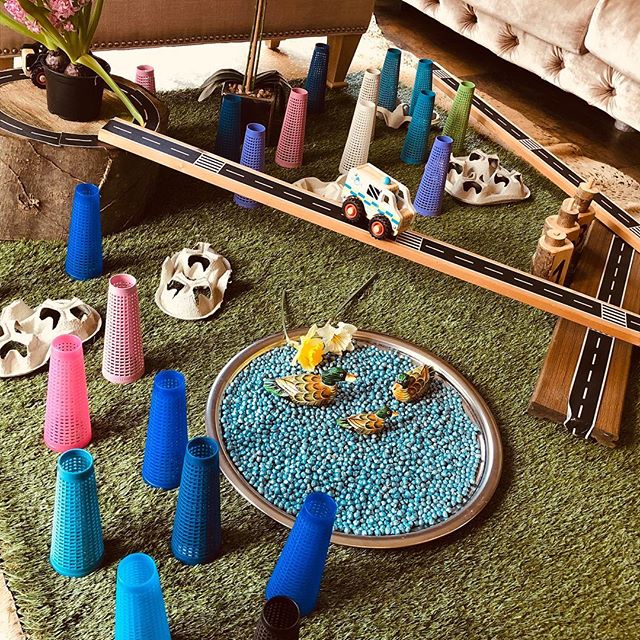Our Toddler Room
Our Toddler Room is registered for fourteen children aged two to three years. There is a separate sleep room, changing area and toilets.
This space has carefully thought out areas. The 'lounge' area is used for quiet play, opportunities to read stories, experiment with our projector, and engage in heuristic play. We then have a 'dining area' that we use for meal and snack times. This doubles as a creative play area and a malleable area. Finally, we have a small world, construction, and role play areas.
This room has free-flow access to Toddler garden. The garden encloses our sand and water play, climbing and gross motor development play, and our mud kitchen and allotment area.
Children in the Toddler room begin to self serve their meals and children are more involved in the preparation of food.
Our environment
Supporting your two year old's learning.
Our two year old's are at a challenging time in their development.

Physical Development
Two year old's tend to love to climb and be active. Why not sign them up to our football and dance programs. Alternatively, we provide lots of physically stimulating activities and opportunities.
Our stream in the Kindergarten garden and waterworks in the toddler garden provide excellent opportunities for physical development alongside team building, building resilience, and working on children's development of knowledge and skills that they will be able to transfer into other areas of learning throughout their later life.
We also have a climbing tree in our two-year-old garden our children go on regular visits to the woods and woodland areas. We encourage our children to be at one with nature. To want to breathe the environment. Our setting is currently working towards becoming a Forest School and a Beach School.
"A schema is a pattern of repeated actions. Clusters of schemas develop into later concepts" (Athey, 2007).

Schematic Play
Some children learn through schematic play. If you think of this as being an interconnected web of ideas and knowledge.
Children learn through repeated actions in play. There are many types of what we call 'Schema's'.
Here are some of the most common:
- Trajectory - creating lines in space by climbing up and jumping down. Dropping items from up high.
- Positioning - lining items up and putting them in groups.
- Enveloping - covering themselves or objects completely. Wrapping items up or placing them in containers.
- Rotating - enjoys spinning items round and round. Likes to run around in circles or being swung around.
- Enclosing - adding boundaries to play areas e.g. fences around animals. Adding borders to pictures.
- Transporting - carrying or moving items from one place to another; carrying items in containers or bags.
- Connecting - setting out and dismantling tracks, constructing, joining items together with tape or glue.
- Transforming - exploring the changing states of materials, transforming them from a solid to liquid state and back again.
- Orienteering - an interest in positioning themselves or objects in different places or positions e.g upside down or on their side.


